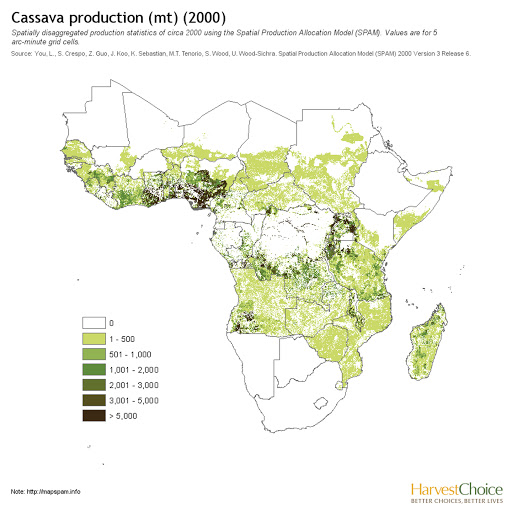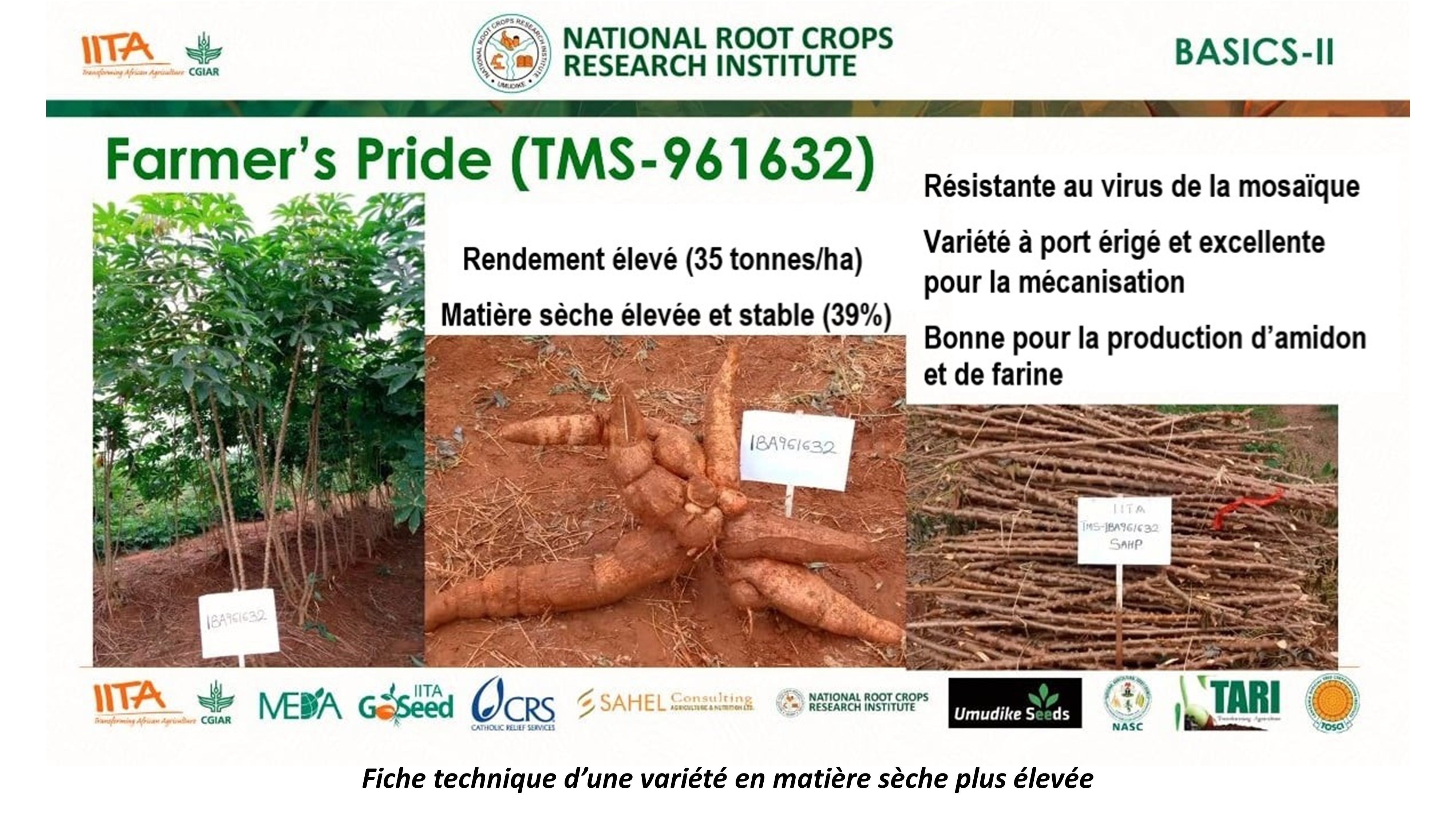Cassava varieties with high dry matter and starch content
Summary
The amount of dry matter and starch held by cassava roots are greatly influencing their value for farmers because these quality characteristics determine its uses in manufacturing of flour, chips or industrial materials. Cassava crops in Sub-Saharan Africa are renowned for a low degree of root filling with dry matter and starches, which is for a large part ascribed to the limited range of varieties that are accessible to farmers. Improvements of root quality are representing a major growth market for African cassava in the medium term future, immediately benefiting food security of subsistence communities and growth of agri-food industries. Breeding cassava for high dry matter and starch content is important to improve the supply for local and regional markets, and a number of varieties have been developed for African farming systems. The better quality of roots makes that farmers get a higher economic yield from a cassava crop on the same area of land, and thus more food or income.
About the Solution
Bulking of dry matter in cassava roots takes place by accumulation of starch cells at specific stages in crop’s growth cycle, and the degree of root bulking differs largely among varieties, and environment. The total amount of carbohydrates in roots of common African cassava varieties ranges from 20% to 31% of fresh yields, and starch makes up 64% to 72% of the total carbohydrates. Breeders can substantially improve the quality of roots by conventional crossing of cassava varieties known for superior root filling with lines that are high-yielding and resistant to major pests and diseases. In this way, a number of cassava varieties have been developed with root dry matter contents of 40% to 45%, and starch contents of 80% to 95% (on total carbohydrates), which achieve similar or higher yields than natural land races and hybrid lines of cassava grown in Sub-Saharan Africa. Gene marker assisted and transgenic methods are also used for breeding cassava with high dry matter and starch content. Roots with improved quality are suited for fresh consumption or processing into flour or starch that can be used as thickener for foods, as well as filler, binder or stabilizer for pharmaceutical products, packaging material and industrial goods.
Cassava varieties with high dry matter and starch content offer a viable tool to enhance the root yields and qualities in all major growing areas of Sub-Saharan Africa because common varieties that are cultivated by millions of farmers achieve medium to poor root bulking. Varieties with improved root quality are available that possess a high degree of resistance to drought and pests, and adaptations to other adverse growing conditions or production objectives; and combinations of traits can be tailored to suit the needs in a specific area. Cassava root with high dry matter and starch content are useful in subsistence farming systems for enhancing food security and incomes, and commercial agri-businesses as source of low-cost flour and starch for various manufacturing processes.
A set of cassava varieties with improved root quality have been released in Sub-Saharan Africa that also possess other favorable agronomic and nutritional traits, such as TMS-961632 (Famers’ Pride), TME419 and CR36-5 (Ayaya). There is a medium to high level of heritability for root dry matter content when crossing varieties, enabling breeders to improve the root quality of a broad selection of varieties. Nearly all high dry matter and starch cassava varieties that are available to farmers in Africa were developed using regular crossing techniques, while genetically modified varieties are very few to date.
The multiplication and cultivation of cassava varieties with high dry matter and starch happens in the same way like any other cassava crop, in which cuttings taken from one stand are reused to plant another field. Caution has to be exercised by farmers that planting materials are free of diseases symptom when transfers are made between fields. Different modes for planting have to be employed depending on rainfall conditions, cuttings are best placed horizontally and covered entirely with soil in areas with a dry climate, and can be planted vertical or angular in humid areas with high precipitation. Recommended soil and fertilizer management for particular growing areas and conditions have to be adhered to achieve high root yields. Limitations in the availability of nutrients and water, soil compaction and weed encroachment have to be addressed for making sure that the use of disease resistant cassava varieties increases production levels.
Commercialization
Commercially available
Solution Images
Institutions

Accompanying Solutions
Disease resistant cassava varieties, Golden cassava varieties, Integrated weed, pest and soil management system (GAP), Seed bulking for cassava multiplication



